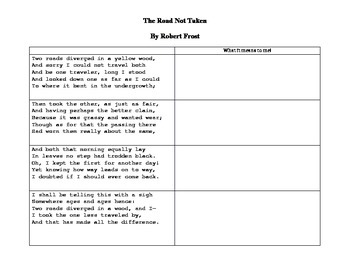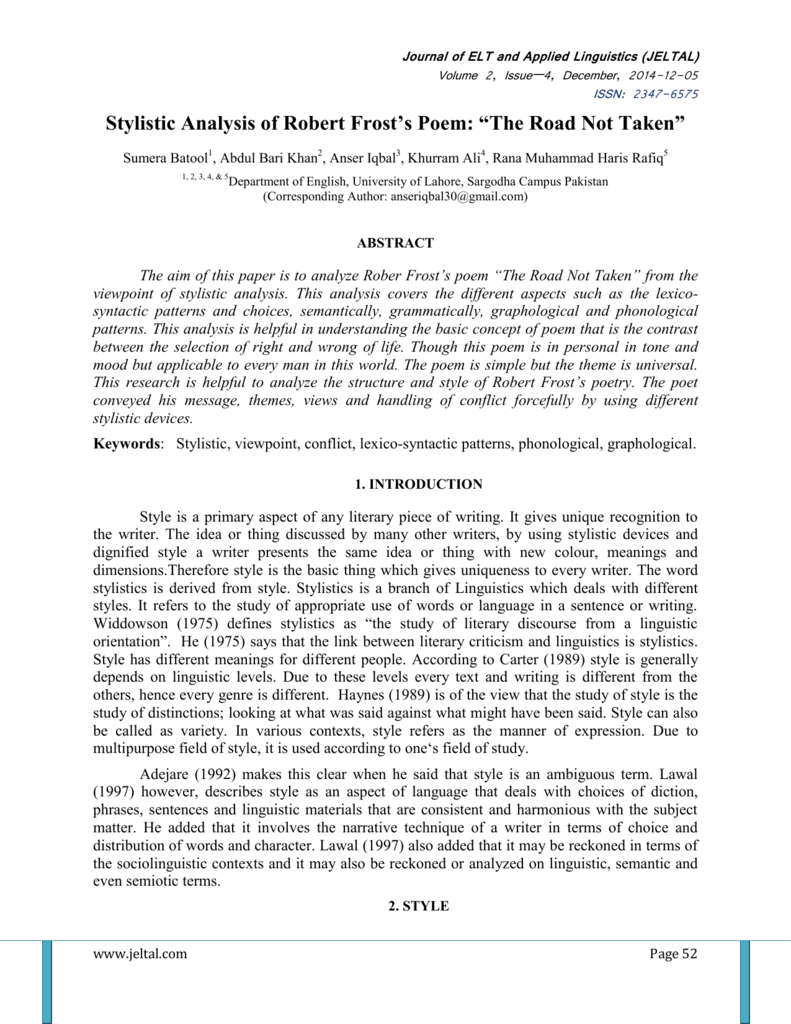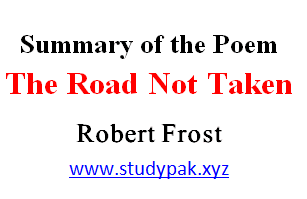

The poem is often interpreted as a celebration of individualism and the importance of making unconventional choices.

They ultimately decide to take the less traveled path, which has made all the difference in their life. The speaker of the poem comes to a fork in the road and must choose between two paths. “The Road Not Taken” by Robert Frost is a poem that explores the theme of choice and decision-making.The road not taken summary stanza by stanza the road not taken analysis robert frost Let’s see the stanzas now and try to analyze the poem Road not taken from a reader’s point of view. So that’s all from the poem road not taken summary by Robert Frost. We have explained the road not taken summary line by line of each stanza. This ambiguity is part of what makes the poem so enduring and thought-provoking. The phrase “made all the difference” could be interpreted in many different ways, and the poem leaves open the question of whether the speaker’s decision was ultimately the right one.

However, it is worth noting that the speaker is somewhat ambiguous about the nature of the difference that their decision has made. The speaker says that they took the road less traveled by, and that this has “made all the difference.” This line is often interpreted to mean that the speaker’s decision to take the less traveled path has had a profound impact on their life, leading them down a unique and unpredictable path. The final three lines of the poem are perhaps the most famous, as they encapsulate the central message of the poem. This creates a sense of distance and separation between the speaker and the decision they made. The line “Somewhere ages and ages hence” suggests that the speaker is imagining a distant future, far removed from the moment when they made their decision. The speaker says that they will tell the story with a sigh, suggesting that they will look back on their decision with a sense of regret or nostalgia. The fourth and final stanza of the poem looks forward to a time in the future when the speaker will tell the story of their decision to take the less traveled path. the road not taken Poem summary of Stanza 4 This line also hints at the sense of regret and uncertainty that the speaker feels throughout the poem. The speaker is unsure if they will ever have the opportunity to revisit the first path, or if their decision to take the second path will alter the course of their life in some way. The final line of the stanza, “I doubted if I should ever come back,” suggests that the speaker is aware that their decision to take the second path may have lasting consequences. The phrase “way leads on to way” suggests that there is no end to the choices we must make in life, and that every decision leads to new opportunities and challenges.

The next line, “Yet knowing how way leads on to way,” suggests that the speaker recognizes that each decision they make in life will lead to further decisions and paths to explore. The speaker expresses a sense of regret that they were unable to take both paths, saying “Oh, I kept the first for another day!” This line suggests that the speaker wishes they could have explored both paths, but knew that this was not possible. The speaker notes that both paths appeared to be equally traveled that morning, and that there were no signs of previous travelers on either path. The third stanza of the poem describes the moment after the speaker has made their decision to take the second path.


 0 kommentar(er)
0 kommentar(er)
